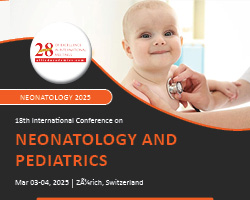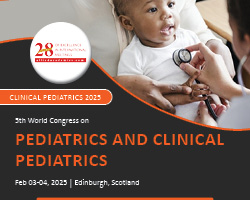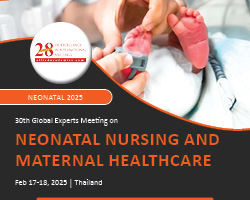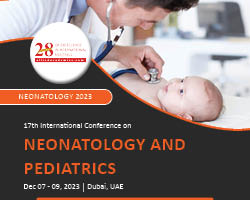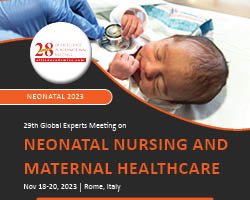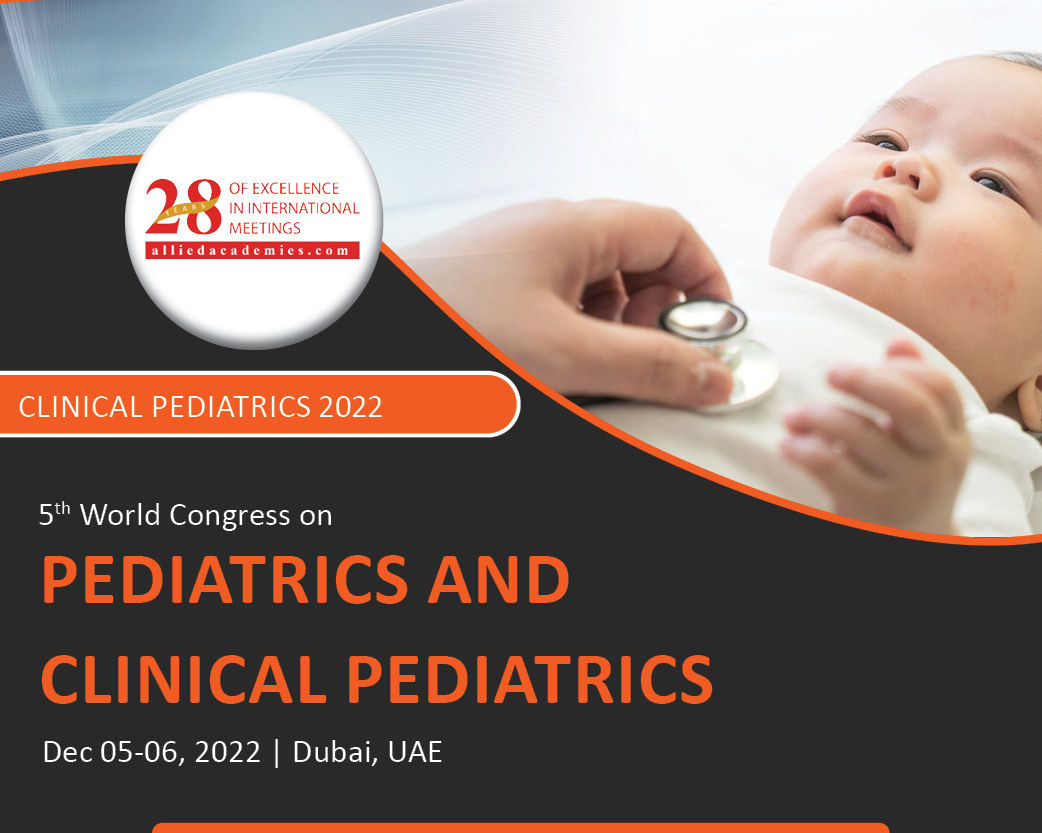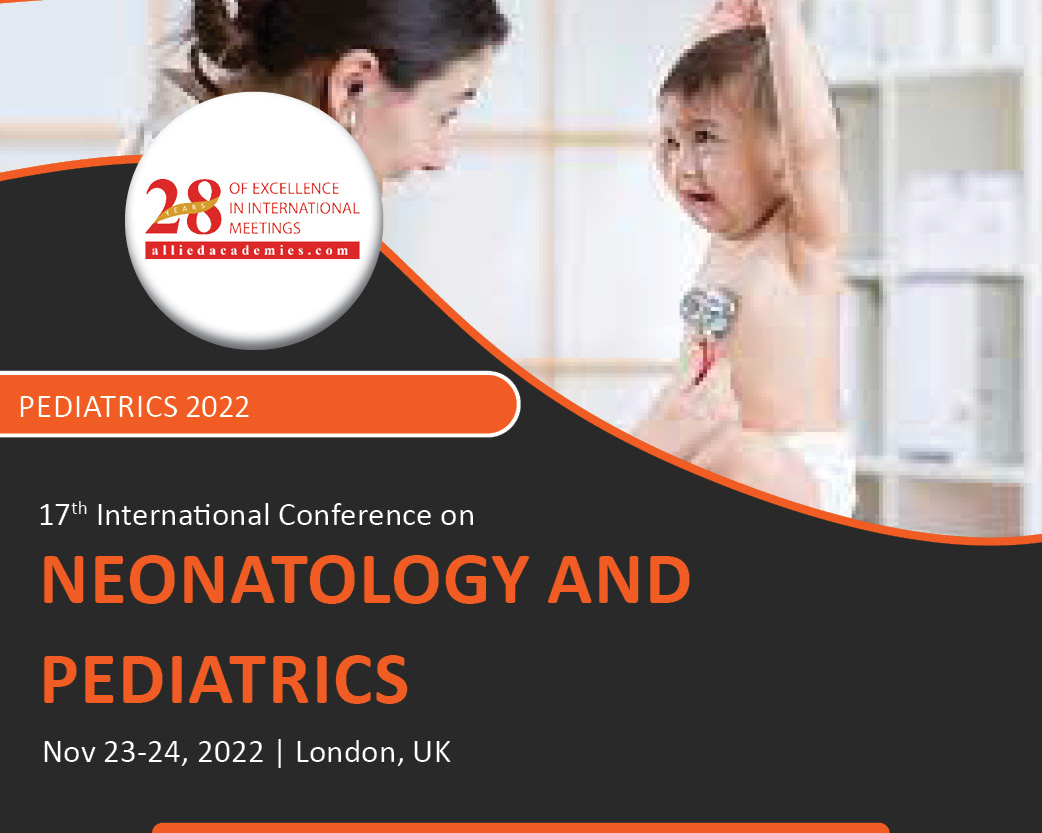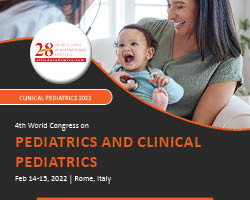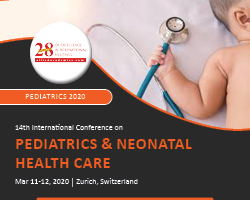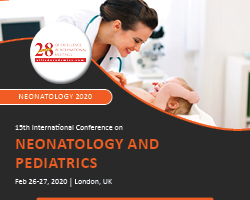2026 Conferences
2025 Conferences
2023 Conferences
2022 Conferences
2021 Conferences
2020 Conferences
A big reason for going toPediatricsConferencesto meet with likeminded people andPediatricsHealthcare industrypeers.PediatricConferencesbring together people from all different geographical areas whoshare a common discipline or field, and they are a great way to meet new peoplein your field of interest in Pediatrics.
At a Pediatric conference,you will be able to get together with people from a wide range of backgrounds,of whom you may not encounter at your home workplace or institution. As youbuild your professional network,Pediatrics Conferencescan become a good place for meeting with people in who has ideas on variousfiled of child healthcare that you haven’t connected in a while.
Pediatrics Healthcareis an extraordinary event that brings togethera distinctive and international combination of leading large and medium-sizedcompanies, universities, research institutes and Pediatric hospitals.
Pediatrics Healthcare Conferencesaims to promote continuing education in medicine and encourage a rich exchangeof facts and ideas about the health of infants and children. This will be abetter chance to have an impact on the larger gathering of pediatricians. Onthis favorable occasion, the organizing committee cordially invites allpediatricians, scientists, researchers, pediatric nurses, pediatricians, educators,pharmacists and other health professionals wishing to improve the health needsof pediatric patients. suffering from health disorders.
Pediatrics Healthcareoffers the opportunity to determine advanced techniques, research anddevelopments in the field of pediatrics. Around the world, these newstate-of-the-art methods and techniques will be used to ensure the health ofpediatricsand children.Pediatrics Health is an ideal platform for developing innovative techniques andnew trends in pediatric and pediatric health research. Pediatrics Health is amulti-purpose conference that provides expert diagnosis and treatment for alltypes of pediatric andneonataldisorders. With this annual meeting on pediatric health, we are expectingexperts from around the world who are coming together to launch innovativediscussions and ideas to support the conference discussions, which will beuseful for children with different types of diseases. This internationalpediatric conference also supports the dynamic cooperation of young analysts inthe product line, during a poster competition and a youth research forum.
Pediatricsis a field of medicine dealing with the health and medical care of infants, children and adolescents from birth to the age of 18. The word "pediatrics" means "children's healer". They are derived from two Greek words: (pay = child) and (iatros = doctor or healer).
The aims of the study ofpediatricsare to scale back infant and child rate of death, control the spread of communicable disease, promote healthy lifestyles for long disease-free life. Provide aid in the treatment of chronically ill children and adolescents.
Pediatriciansdiagnose and treat several conditions among children including:-injuries infections genetic and congenital conditions death, control the spread of communicable diseases, promote healthy lifestyles for long disease-free life and help ease the issues of youngsters and adolescents with chronic conditions.
Importance:
Deaths from children are increasing significantly each year. The World Health Organization has registered 8.8 million deaths, occurring annually between adolescents under the age of five and babies. A 365-day neonatal mortality rate frominfectious diseaseshas been recorded, with 3.8 million deaths within the first 30 days of life. With this in mind, we tend to think that specialized training for specialists to treat their specialty is important for teaching clinic teachers and clinicians.
Market Analysis:
The globalpediatricsmarket consists of healthcare services provided by multiple sectors of the healthcare industry. Children are vulnerable to illness and illness and can easily become infected. As a result, the pediatric health sector is thriving regardless of the situation. The expansion of this industry is mainly due to changes in family lifestyles and harmful habits. The child health market is analyzed and market size information is provided by the region. Divided by application, the pediatric medical market is divided into the United States, Europe, China, Japan, Southeast Asia, India and other regions. The report provides the regional market size for the amount of 2022- 2028. It also provides market size and forecasts by player, type, and application segment in terms of sales and revenue for the period 2022- 2028. The United States, especially the United States, dominates the global pediatric intervention marketcardiologydue to the increased incidence of heart disease in children. The pediatric market is expected to grow most rapidly during the forecast period due to the influx of investment from the region's leading healthcare companies, especially China and India. The pediatric interventionalcardiologymarket is driven by improvedhealthcareservices, governmenthealthcarereforms, and increased public awareness.
The global market for prescriptionhealth careservices was valued $56.9 billion in 2008, and it was expected to grow to $79.3 billion in 2013, with a compound annual growth rate of half-a-dozen.8%. The global pharmaceuticalHealth Caremarket then grew at a seven.2% CAGR from $65.8 billion in 2010 to $81 billion in 2013 and $83.6 billion in 2014. By 2019, the global pharmaceutical market is expected to reach over $100.7 billion. This state of affairs is covered in detail in the paediatric medicine research report, as well as the industry's growth predictions for 2019-2023. This report contains insightful data for business strategists, as well as historical and art movement worth and revenue projections for the coming years, as well as a discussion of the top merchants operating in this market. The revenue generated from the distributor analysis ofpaediatric medicineinternationally is used to calculate the market size.
Scope of the Report
Pediatric healthcare, as defined in the scope of this report, is a branch of medicine that deals with the medical treatment, development, and diseases of newborns, children, and adolescents. Because children have a lesser immune system, they are more susceptible to gastrointestinal, allergy, respiratory, and other chronic disorders. The market is divided into three categories: Type (chronic and acute illnesses), Treatment (vaccines, drugs, and others), and Geography (North America, Europe, Asia-Pacific, Middle East and Africa, and South America). The market research also includes estimated market numbers and trends for 17 countries in significant regions throughout the world. The report includes the value (in USD million) of the above segments.
Gilead built apaediatric medicinedevelopment centre in Ireland in April 2022. The new paediatric centre in Ireland will perform paediatric clinical studies in 18 countries for seven different pharmaceuticals.
Recent Development
In February 2022, Pfizer Inc. and BioNTech have initiated a rolling submission seeking to amend the Emergency Use Authorization (EUA) of the Pfizer-BioNTech COVID-19 Vaccine to include children 6 months through 4 years of age (6 months to 5 years of age), in response to the urgentpublic healthneed in this population.
Market Size and Forecast
In terms of paediatric antibodies, North America has the best position on the planet. Increased federal expenditure on the human administrations business has sparked a surge in paediatric antibody awareness in North America. In North America, the United States and Canada are two important markets forpaediatric vaccines.
Increased government expenditure on therapeutic and sector development is also driving the development of paediatric antibodies in Europe. The market in major European countries such as Germany, Italy, France, Spain, and the United Kingdom is bolstered by funding provided by open social protection organisations like as the NHS (National Health Service).
Growing World Health Organization (WHO) activities in countries like India, China, and Japan are expected to boost the Asia-Pacificpaediatric vaccinationsshow. Nonetheless, the Asia-Pacific paediatric market is likely to benefit in the future from the rising financial development of key Asian countries.
Infant mortality rate
The overall infant mortality rate is expected to be 6.42 deaths per 1000 live births, with 7.12 deaths per 1000 live births for males and 5.67 deaths per 1000 live births for females. At the moment of birth, the average life expectancy is 76.25 years. It is 72.31 years for the male population and 80.43 years for the female population.
Given that deaths among children and adolescents under the age of 19 are largely preventable, analysing trends in deaths owing to potentially modifiable variables allows for preventive interventions to be taken at the national and local levels, contributing to future mortality reduction.
Although the number of deaths among European children due to external causes has dropped since the 1990s, transport accidents, drowning, and other external causes remain the primary causes. According to the World Health Organization (WHO), over 950,000 children and adolescents under the age of 18 die each year as a result of injury and violence, with roughly 90% of these deaths being unintentional (WHO and UNICEF). Injury fatality rate in the age group 5–14 in 2012 (MR).
Global Associations and Societies associated withPediatrics:
Paediatrics Conference|Paediatrics Conferences|Neonatology Conference|Neonatal infection Conference|Clinical Paediatrics Conference|Child Psychology Conference|Paediatric Surgery Conference|Paediatric drugs Conference|Paediatric Vaccines Conference|Behavioural Disorder Conference|Immunization Conference|Gastroschisis Conference|Pediatrics Meetings|Pediatrics Events|Neonatology Conference|Neonatology Events
- American Academy of Pediatrics
- American Society of Pediatric Otolaryngology
- American Pediatric Surgical Associations
- Society for Pediatric Dermatology
- Child Neurology Society
- European Pediatric Associations
- The North American Society for Pediatric and Adolescent Gynecology
- American Academy Society
- Pediatric Infectious Diseases Society
- Society for Pediatric Radiology
- Society for Pediatric Anesthesia
- Pediatric Trauma Society
- International Pediatric Associations
- Canadian Pediatric Associations
- American Society for Pediatric Oncology & Hematology
- Society for Developmental and Behavioral Pediatric
- Indian Associations of Pediatric surgeons
- Dutch Associations of Pediatrics
- Japan Overseas Christian Medical Cooperative Service
- Japan Palestine Medical Association
- Japanese Organization for International Cooperation in Family Planning
